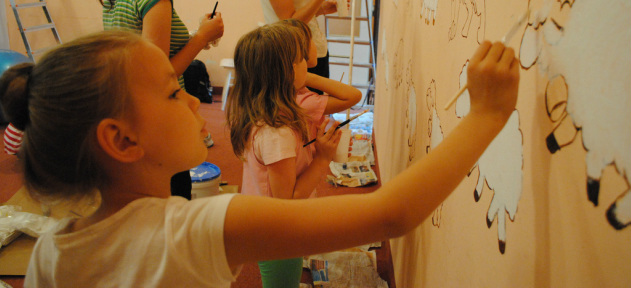|
Elaine Gast
Ravi Shah is wild about dinosaurs. He knows more about them than any adult I know (maybe with the exception of his mom), and he can rattle off a dizzying number of dinosaur facts faster than you can say “tyrannosaurus.” When I first met the lively 7-year-old, he led me to his kitchen counter, where he had arranged a showcase of claysculpted dinosaurs. Next to each of the orange and blue blobs of clay, he had attached a price tag—50 cents, 75 cents, one dollar. “I’m selling them for charity,” he told me matter-of-factly. “Want to buy one?” Ravi’s passion for dinosaurs may not be unlike that of other boys his age, but what is different is his pursuit in giving. He’s been doing it since he was 2. As Ravi has gotten older, the Shahs have continued to teach him about giving and helping others. “We have a ‘new toy’ rule in our house,” Shah said. “Every time he gets a new toy, he must donate one he no longer plays with. We let him decide which toys he wants to give away, and then together we take the items to the Goodwill.” Ravi’s giving doesn’t stop there. He comes up with clever ways to raise money for charity—from lemonade stands to concerts to selling more clay animals over the Internet (even in the first grade, he had his own website). “We give him ideas on different charities he can donate to, but let him decide where the money goes,” Shah said. Many families are interested in teaching their children the value of giving, but they don’t always know the best way to do it. According to Susan Crites Price, author of The Giving Family: Raising Our Children to Help Others (Council on Foundations, 2001), it’s important to start young. “Habit gets instilled at an early age, and young kids can do a lot,” Price said. Preschoolers, for example, can go with the family to volunteer at a soup kitchen, or help pick up litter around the neighborhood. “That doesn’t mean that for teenagers it’s too late, but the earlier they start giving, the more it becomes a habit.” In her interviews with parents and experts nationwide, Price found there are several keys to raising charitable children. Here is what she recommends: • Make giving the rule, rather than the exception. “We teach kids to brush their teeth because it’s good for them. We also need to teach them to give and serve—because that’s good for them too.” If you find the right projects, Price says, they won’t complain. • Show and tell. “While kids may see us volunteering and writing checks, we should also tell them why we are doing it.” This will help them make those decisions for themselves when they get older. • Let them lead. “If we let children decide for themselves how to give their time or their money, they are more likely to enjoy it.” It’s good to give them ideas, of course, but better to let them choose • Find volunteer projects. There are plenty of places to volunteer— schools, community groups, faith-based organizations, clubs, and more. But you don’t need to rely on outside groups for volunteer opportunities. “Kids can create their own volunteer experience — baking cookies for an elderly neighbor or spending time with a special needs child, for example,” Price says. “Look to your own community first.” • Tie it to something they can see. It makes a better impression when you show kids what they’re giving to, and why. According to Shah, “It’s hard for kids to imagine that other people aren’t as fortunate as they are. Taking them to an orphanage (or another place where they can see people in need) lets them understand why it’s important to help.” • Consider ways to give more. While no donation is too small, some parents will match what their child wants to give, sending the charity a more meaningful amount. According to Price, one parent even paid her child for his volunteer hours, giving him the opportunity to then donate the money to the same charity. • Take the time to do it. Kids and parents are busy people. There is soccer practice, music lessons, school, and work—and, of course, getting dinner on the table. “Be intentional about the family giving,” Price recommends. “Make time for it. Make it a priority.” If you want the idea of giving to stick with your kids, don’t just take time to do it—do it often. Giving, after all, is more than a one-time event. “It’s really something that has to be a regular part of your life,” Shah said. “If they see you do it and hear you talk about it often, they will want to do it too.”
0 Comments
Leave a Reply. |
Categories
All
Archives
March 2024
LinksFree Children's Stories |


 RSS Feed
RSS Feed
